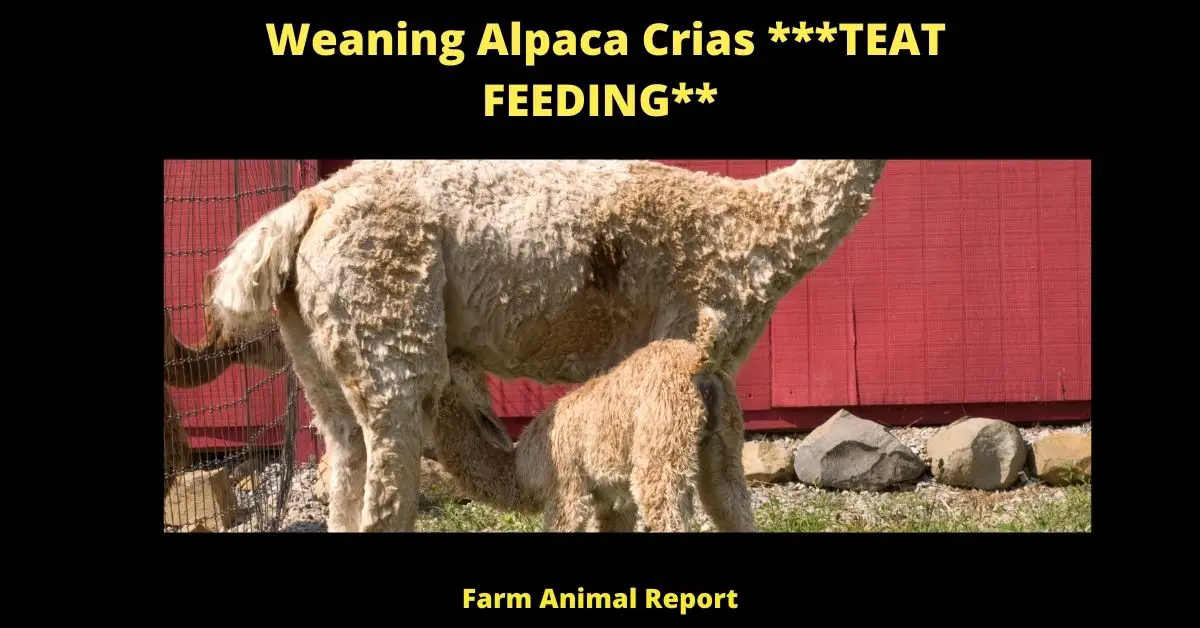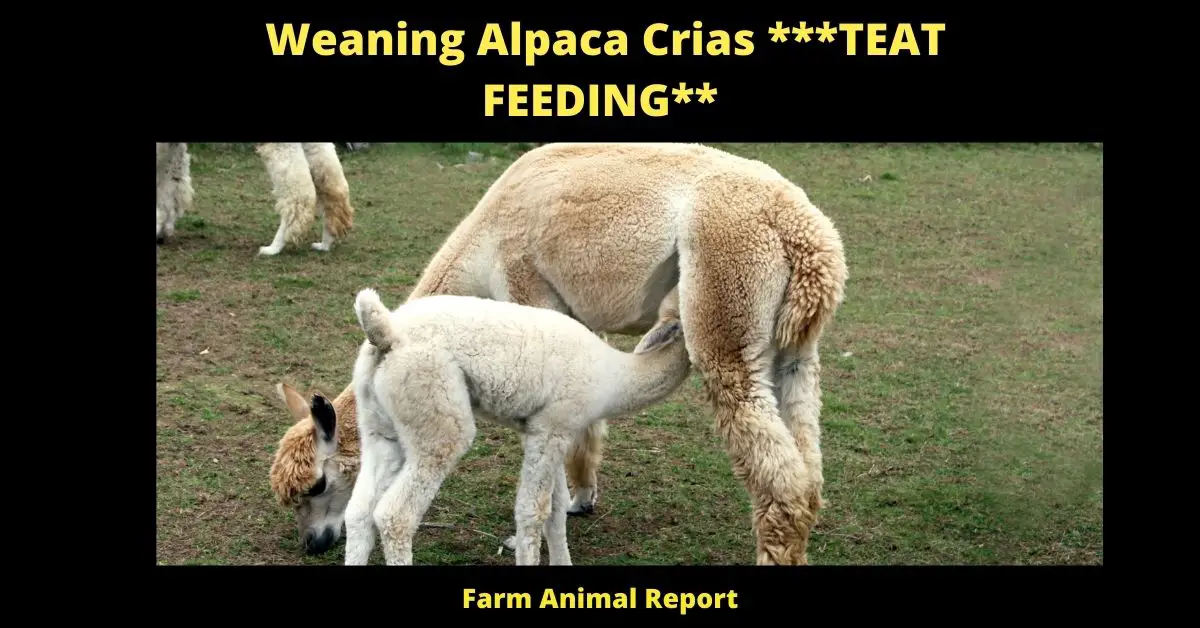Weaning Alpaca Crias: A Comprehensive Guide
Alpacas are known for their fleece, but did you know they can also produce milk? Alpaca milk is very similar to milk from a cow or goat. When an alpaca gives birth, she will usually nurse her cria for about six months before weaning it. This process begins by gradually decreasing the amount of time that the mom spends nursing and ends with complete separation from the mother within six months. In this blog post, we will walk through how to successfully wean your alpaca crias!
As a general rule baby alpacas are ready to be weaned at 6 months of age. Weaning is a natural process where the baby will transition from her mother’s milk to hay, grass, alpaca creep, and water. This is a gradual process, mother and baby naturally will take care of it
What is Weaning Alpaca Crias?
Weaning Alpaca Crias – When an alpaca gives birth, she will usually nurse her cria for about six months before weaning it. This process begins with gradually decreasing the amount of time that mom spends nursing and ends with complete separation from mother within six months. Weaning in general is when you remove something (animal or person) from a long-term situation. Alpacas are fed hay and given water daily, but they will not be weaned until mom has stopped nursing cria entirely.
How to Wean Alpaca Crias
When weaning alpaca crias, it is important to remember that they are not like other livestock; they do not eat what their mother eats. This makes the process of introducing them to different foods challenging and time-consuming. You can reduce stress for all involved by following these five steps:
- Wean at 3-6 months
- Wean at 65% of adult body weight – average is 50 pounds
- Provide a creep feeder to encourage eating and reduce weaning stress
- Make sure they are on some type of roughage (hay or grass substrate). This will allow them to learn how to eat hay.
- Keep them with their mothers for at least another 30 days

Why it’s Important to Wean your Alpacas at the Right time.
Alpacas are typically weaned between four and six months of age, but the best time to do so is when they’re around three months old. At this point in their young lives, crias have already received antibodies from their mothers’ milk that will help them fight off disease for a few more weeks after weaning.
There are many factors to consider when weaning your alpacas. The process can be stressful for both you and the herd, so it’s important to weigh all of your options before making a decision. For example:
- Do they have enough space? Some herds do not like being weaned away from their mothers until they have more space.
- Is the breed finicky about weaning? Most Huacaya alpacas are very accepting of the change, but some Suri crias can be a bit harder to convince as they tend to nurse for longer periods of time before being willing to eat solid food.
- Has your vet already advised you to wean?
- Does your herd have enough food sources to feed both the mothers and babies during this time? Alpacas can become very aggressive with one another if their resources are limited. This is why it’s important for all members, including males, to be able to eat together peacefully. If you notice any signs of aggression or stress, you should contact your vet immediately.
What Happens if Baby alpacas don’t get enough milk and food before being weaned (e.g., health risks, death)
Crias can die if they do not get enough nutrition before being weaned. A combination of proper care and feeding is needed to ensure that the cria receives sufficient food for their age/weight category (i.e., body condition score). This will help prevent illnesses such as hypothermia, malnutrition, diarrhea, or pneumonia; as well as address potential complications such as blindness or death.
If the baby is born in a herd, they will start to be weaned at about six months old and if on their own by ten months old. The first step of weaning is called ‘fading’. This consists of reducing the amount of milk given to half, and then a quarter for another week. This is done so that they can get used to eating more solid food which helps with their growth.
Signs that it’s Time for your Cria to be weaned from their mother and how to tell if they’re ready for this change in diet and care.
When a cria is ready to become weaned, they will begin to show signs that their mother’s milk no longer satisfies them. Sometimes this can be seen as the alpacas going off of food and refusing feedings but it could also come in other forms such as low weight gain or soft feces. This means that if you’re noticing any of these signs then your cria is most likely ready to be weaned and you should begin selling milk replacer or hand-feeding them.
For some, it’s more difficult than others when their alpaca offspring are starting this process because they may not show the same signs as other crias might. This could mean that you’re in for a long process of figuring out if they are ready or not. If that is the case then there are some other signs you can look at to cross-reference whether your cria is truly ready to be weaned off their mother’s milk.
If your cria’s body shape has changed, meaning it looks like they’re much thinner than they were before, then it’s most likely that their mother’s milk is no longer enough for them. If you see this change in body shape and your cria continues to refuse feedings or show other signs of not being satisfied with the food then there is a good chance that they are ready to be weaned off the milk.
Jump to Section Newborn Alpacas-Baby Alpacas-Extensive Guide
You can also look at the fecal matter and determine if it is soft like diarrhea or more firm. If you notice that their feces has changed to a different consistency then this could also mean that they’re ready for weaning as well since the milk might be making them gassy, bloated, or giving them an upset stomach in some other form.
One of the biggest signs that your cria is ready to be weaned off their mother’s milk, which you can use as a last resort if they’re not showing any other clear signs, is how attentive and caring they are towards themselves. If your alpaca offspring doesn’t seem like they care for themselves or no longer respond when you handle them then they are most likely ready to be weaned off their mother’s milk.
If you want to take a more proactive approach and begin the weaning process yourself so that it becomes less stressful for your cria, then there is some preparation you’ll need in order to do this properly.
Jump to Section BabyApacas: Predators **DANGER**
The first thing you will want to start feeding them is a high-quality milk replacer in order to get their digestive system prepared for the food that they are going to be eating once you begin weaning. You can also start feeding your cria fiber or pellets beforehand so that it’s easier on them when you’re ready to begin this change in diet.
When you’ve done all of the above and it’s time to begin weaning them off their mother’s milk, you can try using the following method. First of all, don’t be surprised if they’re not eating enough food for your liking because there is a chance that this new change in diet will take some adjustment on their part as well.
Jump to Section Alpacas Giving Birth **A MIRACLE**
Try feeding them more than they’re eating and watch their weight to see if they are still steadily gaining or not. If you notice that it’s taking them longer than usual to gain any sort of weight then it could be a good idea for you to contact your veterinarian so that they can check on the cria in person just to make sure everything is okay with their health.
Final Thoughts
In summary, you can begin to wean your alpaca crias off their mother’s milk by following the steps mentioned above. There are also some signs that they’re ready for this change in diet which include them being skinnier than usual, showing changes in feces consistency, not caring about themselves as much as before, and even if they don’t show any of these signs then you can just try weaning them anyway and see how it goes.


